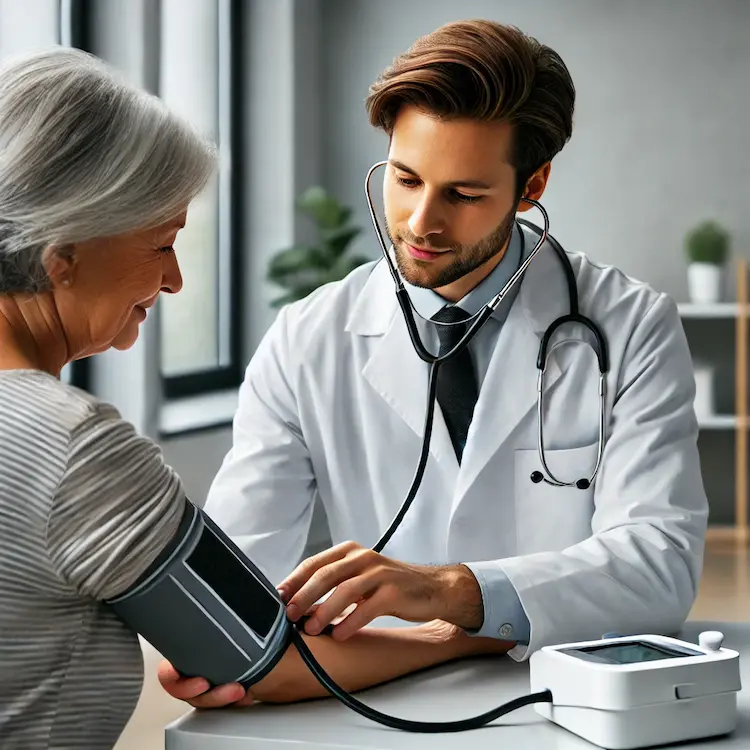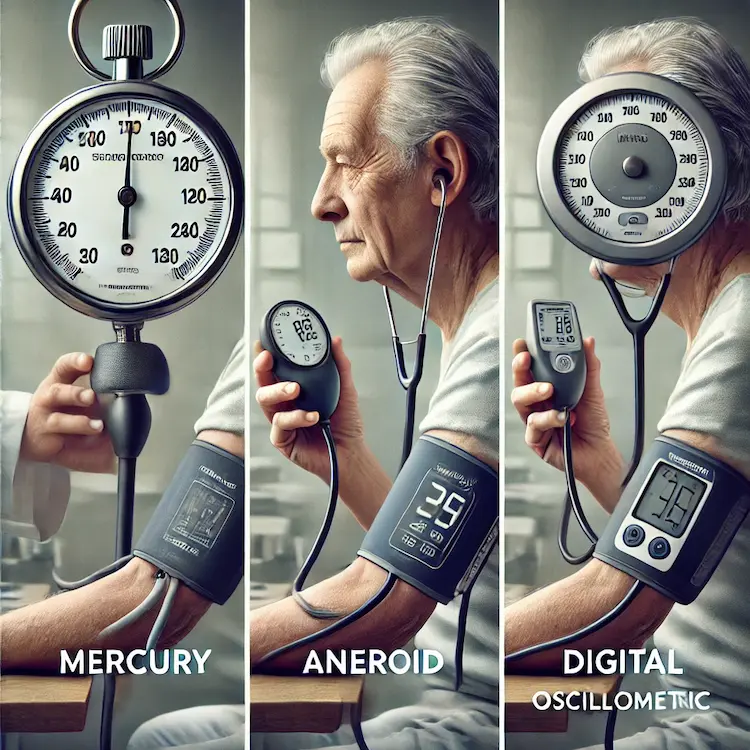Blood pressure monitoring is critical for older adults, as hypertension becomes more prevalent with age. However, the sphygmomanometer accuracy—the devices used to measure blood pressure—can be affected by factors such as arterial stiffness, improper cuff size, and device calibration. Inaccurate readings may lead to misdiagnosis, unnecessary treatments, or overlooked hypertension risks.
This article explores sphygmomanometer accuracy in older adults, the impact of aging on blood pressure measurements, and how different devices compare. It also provides practical guidance on ensuring accurate readings.
Importance of Accurate Blood Pressure Measurement in Older Adults
Accurate blood pressure measurement is essential for diagnosing and managing hypertension, which is a major risk factor for:
- Cardiovascular diseases (CVD) – Heart attacks, strokes, and heart failure.
- Cognitive decline – Chronic hypertension is linked to dementia and Alzheimer’s.
- Kidney disease – Poorly controlled hypertension can damage kidney function.
- Fall risk – Blood pressure fluctuations can lead to dizziness and falls.
Older adults often have increased arterial stiffness, which can result in falsely elevated blood pressure readings. Understanding device accuracy is key to effective health management.

Factors Affecting Sphygmomanometer Accuracy in Older Adults
Arterial Stiffness
As people age, arteries lose elasticity, making them less responsive to blood pressure cuffs. This can cause:
- Overestimation of systolic blood pressure.
- Underestimation of diastolic blood pressure.
- Variability in readings due to poor arterial compliance.
Cuff Size and Fit
An improperly sized cuff leads to measurement errors:
- Too small → Overestimates blood pressure.
- Too large → Underestimates blood pressure.
- Bladder position → The cuff’s inflatable bladder should cover 80% of the upper arm.
Device Calibration and Maintenance
- Manual and digital sphygmomanometers require periodic calibration.
- Inaccurate devices give misleading readings, affecting treatment decisions.
- Hospitals and clinics recalibrate devices every 6 to 12 months, while home users often overlook this step.
Measurement Technique
- The patient should sit quietly for 5 minutes before measurement.
- The arm should be at a heart level with feet flat on the floor.
- Avoid caffeine, smoking, or exercise 30 minutes before measurement.
Comparing Different Sphygmomanometers for Older Adults
| Type of Sphygmomanometer |
Pros |
Cons |
Best for Older Adults? |
| Mercury Sphygmomanometer |
The gold standard for accuracy |
Bulky, requires trained users, mercury toxicity risk |
Not recommended for home use |
| Aneroid Sphygmomanometer |
Portable, affordable |
Prone to user error, requires calibration |
Can be accurate but needs skill |
| Digital Oscillometric Sphygmomanometer |
Easy to use, automated |
Less accurate in cases of irregular heartbeats or stiff arteries |
Best for home use with proper validation |
| Wrist Monitors |
Convenient, portable |
Easily affected by positioning errors |
Less reliable than upper-arm monitors |
Best Choice: Upper-arm digital oscillometric monitors are ideal for older adults due to their ease of use and reliability when properly validated.

Ensuring Accurate Blood Pressure Readings at Home
-
Choose a validated device
- Look for devices approved by the American Heart Association (AHA) or British Hypertension Society (BHS).
- Examples: Omron Platinum, Withings BPM Connect, Beurer BM67.
-
Use the right cuff size
- Measure your arm circumference.
- Use a cuff covering 80% of your upper arm.
-
Follow correct measurement techniques
- Sit in a quiet room with good posture.
- Avoid talking, crossing legs, or moving.
- Take multiple readings (morning and evening) and average them.
-
Maintain and calibrate your device
- Replace batteries regularly.
- Have your device checked annually.
The Future of Blood Pressure Monitoring for Older Adults
With advancements in technology, blood pressure monitoring is becoming more precise. Innovations include:
- AI-powered BP monitors – Adaptive algorithms improving accuracy.
- Wearable BP monitors – Smartwatches capable of detecting hypertension trends.
- Smart home integration – Devices syncing with mobile apps for continuous tracking.
These technologies help older adults manage hypertension more effectively, reducing the risk of cardiovascular complications.
Conclusion
Accurate blood pressure measurement is crucial for older adults to prevent misdiagnosis and ensure proper treatment. Factors such as arterial stiffness, cuff size, and device type affect accuracy. Among the available options, validated digital upper-arm monitors are the best choice for home use. Following best practices for measurement and device maintenance enhances reliability.
Key Takeaways:
- Aging affects blood pressure readings due to arterial stiffness.
- Incorrect cuff size leads to inaccurate results.
- Digital upper-arm sphygmomanometers are the most practical for older adults.
- Regular calibration and proper technique are essential for accurate readings.
- New technologies, like AI and wearables, are improving home blood pressure monitoring.
Actionable Recommendations:
- Choose a validated digital sphygmomanometer.
- Use the correct cuff size for your arm.
- Follow proper measurement techniques
- Calibrate your device annually.
- Monitor trends and consult a doctor if readings fluctuate.

